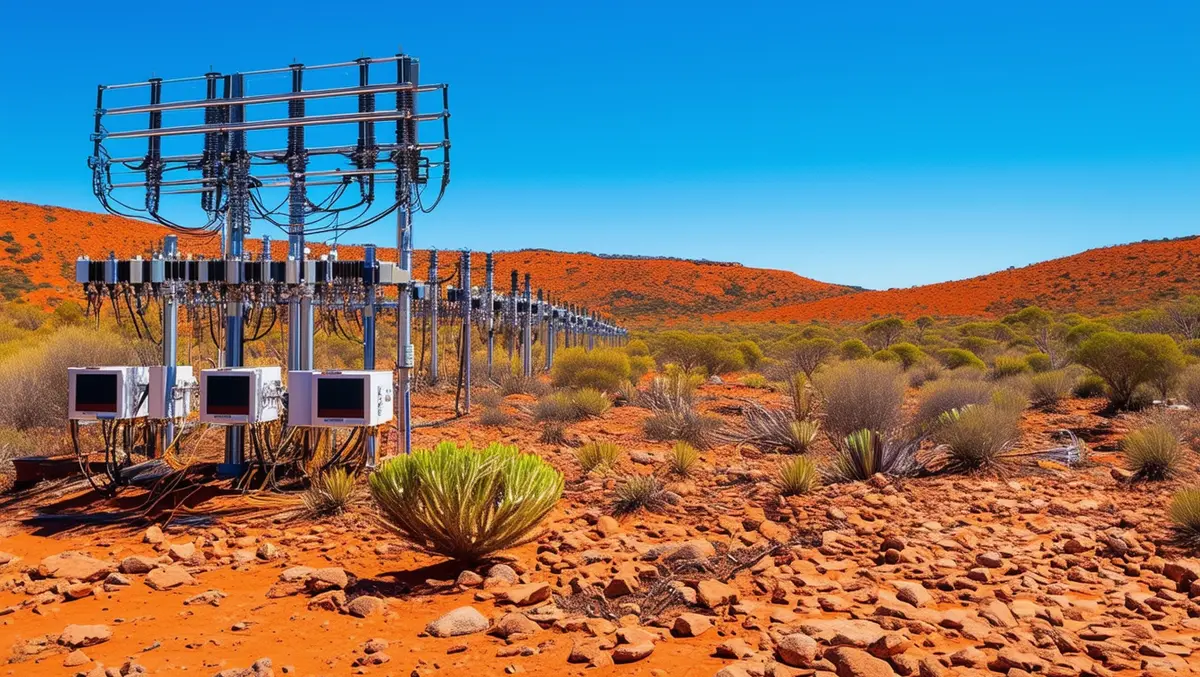
I love a sunburnt country – but it’s tough on network gear
Australia is a beautiful but often harsh country, and for many businesses that call Australia home, the challenges posed by our varied and extreme environment need to be directly addressed to deliver products and services to their customers.
From our utilities delivering energy, water and telecommunications across the vast distances of our nation to mining, oil and gas companies extracting value from isolated and inhospitable areas; and the logistics, services and retail companies that connect and sustain our regional and urban communities – the difficulties of operating in harsh and remote environments can be a source of frustration. Even for businesses with a more urban footprint, there is often a need for network infrastructure in locations that are exposed to the elements, like carparks, warehouses, workshops or stadiums.
In the technology age, where every business depends on reliable communications, a secure, robust, resilient, and sustainable infrastructure is crucial to maintain operations and deliver the service excellence required to remain competitive coupled with a superior customer experience.
A Difficult Balance
Deploying and operating such infrastructure often requires compromises between budget and quality. For example:
- High-Quality Infrastructure: This can be very costly, especially considering ongoing licensing and support costs.
- Low-Quality Infrastructure: It tends to fail frequently, requiring more frequent remediation, eroding operating margins through direct costs and lost revenue due to outages, as well as negatively impacting staff and customer experiences.
- Complex Multi-Tier Architectures: These require highly skilled and expensive resources for design, deployment and management, significantly increasing costs and causing delays if those resources are unavailable.
- Digital Security: Solutions must be physically hardened against environmental factors and protected against cyber threats. This is particularly relevant for entities under the Security of Critical Infrastructure (SOCI) Act, but broadly applicable to all businesses.
Historically, many organisations have either overspent on premium solutions that met operational needs but were financially punishing or underspent on budget solutions that were unreliable or unfit for purpose. Neither way is optimal for the organisation or their customers, with service delivery suffering as a result.
The Perfect Balance
Of course, the ideal solution for these businesses is the 'goldilocks zone' - one where robust, secure, ruggedised infrastructure can be procured, deployed, managed and maintained with minimal resources and at a palatable cost.
One of the key ways businesses can reduce operational overhead is through designing for simplicity and automation. Through sensible architecture selection, appropriate template configuration and policy assignment, infrastructure deployment can be largely automated, self-healing and self-policing.
For example, the selection of Shortest Path Bridging (SPB) as a network architecture provides numerous advantages over traditional multi-tier design. SPB is a protocol that was specifically designed to improve reliability and fault tolerance whilst reducing complexity. As a non-blocking architecture, the network runs more efficiently, and failover times are rapid in the event of a link disruption. It's also far less complex and less expensive to design, configure and maintain than a multi-protocol design that may include MPLS, OSPF, VRFs, VLANS, VXLAN and others.
The application of machine learning and artificial intelligence (ML/AI) to network operations – a field referred to as AIOps – is an extension of network automation that promises to reduce operational workloads even further so that skilled resources can focus on initiatives linked to business value and innovation, rather than day to day troubleshooting.
Secure by Design
Naturally, digital security should not be forgotten in a modern network of any kind. Zero trust architecture provides dynamic service provisioning to ensure devices are secured with both macro- and micro- segmentation. Features such as IoT fingerprinting can automatically detect, identify, segment and monitor any connected device, which improves security posture and increases business agility. A universal network profile (UNP) ensures that all connected users and devices are identified and granted appropriate role-based access wherever they connect on the network, whether it's wired or wireless.
Built Tough
Finally, the network infrastructure itself needs to be designed for harsh environments. Fan-less network infrastructure that is designed for operation in wide temperature ranges and resistant to dust, humidity and vibration has a much longer lifespan than equipment designed for typical office environments. Therefore, refresh cycles are longer and the upfront investment can be amortised across a longer time period. Specific industries such as rail and road transport, energy and utilities or defence may need additional certifications for compliance reasons as well.
Flexible
Any associated management platform should be equally robust, and flexibility with cloud or on-premise management is important for organisations with specific security or availability requirements. Likewise, procurement flexibility should be available to ensure that businesses can choose either a CAPEX or OPEX weighted solution, depending on their individual preference and budget considerations.
The perfect network infrastructure solution for businesses operating in Australia's toughest conditions doesn't have to be a pipe dream. With the right combination of secure, ruggedised infrastructure, flexible procurement, simple but powerful architecture and mature automation technologies, organisations can adapt and thrive in the harsh Australian climate just as well as our native flora and fauna.

